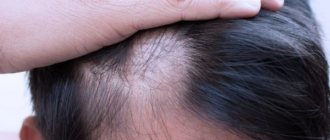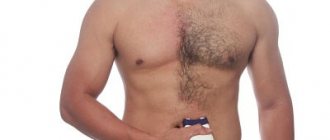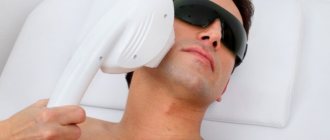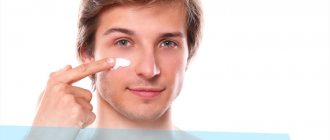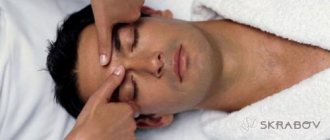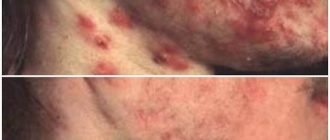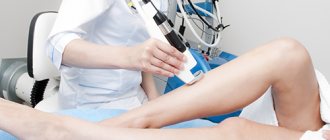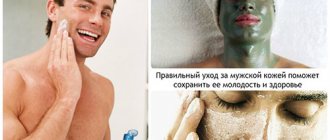Cosmetic procedures
Alopecia, or baldness in common parlance, occurs quite often in both men and women.
Depending on the cause of its occurrence, hair falls out throughout the entire scalp or in specific places. Those who have experienced hair loss on their temples are starting to worry with good reason. After all, the symptom of loss itself always means that something is going wrong in the human body, some disturbances have occurred. In the article we will analyze the main reasons why hair falls out on the temples, whether this problem can be combated, what preventive measures to take to strengthen the hairline, and how you can hide a bald spot in the temporal area.
https://www.youtube.com/watch?v=nCcOvVTxLeE
The temporal part of our head cannot boast of abundant hair, since most of the hair is on the crown and back of the head, and when hair in this area begins to fall out, the problem of baldness becomes much more noticeable. Why is this happening?
Main types of alopecia:
- androgenetic, when hair falls out due to a predisposition at the genetic level, in 10% of cases it is possible in women after a hormonal imbalance;
- focal or nested, can be the cause of various autoimmune diseases and system disorders in the body;
- diffuse, when hair loss is associated with previous diseases, neuroses, the use of medications and hormonal drugs, changes in hormonal balance, or a lack of vitamins and minerals in the body.
If hair is actively falling out at the temples, it is not a fact that this alopecia is classified as focal. Perhaps hair begins to fall out in other areas, but not as noticeably. Remember that the normal number of hairs that a healthy person loses daily is up to 100 pieces. Losing a lot of hair in other parts of the scalp may mean that the alopecia is diffuse.
If there is little hair loss on the back of the head or crown, but a lot on the temples, you should think about the occurrence of an autoimmune disease - when the immune system works against its own body and attacks the hair follicles rather than protecting them.
The main reasons for hair loss at the temples, including the causes of focal and diffuse alopecia:
- mental stress (occurs in 87% of cases when alopecia areata occurs);
- vitamin deficiency, iron deficiency, lack of calcium, protein;
- hormonal imbalance (in women);
- dysfunction of the thyroid gland;
- genetic predisposition to an autoimmune disease (occurs in 30% of people);
- the occurrence of foci of chronic infection, worms and any other diseases that disrupt the immune system;
- external effects on hair: highlighting, dyeing, perm, and so on;
- seborrhea - dysfunction of the sebaceous glands, manifests itself with increased oiliness or dryness of the scalp.
In our country, just like in animals, the so-called “molting” occurs in the off-season. Therefore, during the cold winter or spring, hair may fall out more actively than usual. However, off-season hair loss is explained by a lack of vitamins and minerals, and goes away after a few weeks.
To determine the correct root cause of hair loss, you should contact several specialists. First of all, you should visit a trichologist - a doctor specializing in hair diseases. If you have alopecia areata, visiting a trichologist is mandatory.
You can also contact an endocrinologist to examine the thyroid gland and a dermatologist. Girls can consult a gynecologist about hormonal imbalance.
A man with a similar problem must remember and strictly follow an important rule - every time he washes his hair, he must massage his skin. Moreover, this procedure is accompanied by a cool shower: its jets are directed directly to the head, and the fingertips rub, tap and pinch the skin with active movements.
This method improves blood circulation, ensures a complete supply of oxygen and nutrients directly to the hair follicles.
In addition to massage, you can use the following folk remedies to solve the problem:
- Nettle and vinegar lotion. You will need fresh leaves of the plant, which need to be crushed into a pulp - the resulting amount is 5 tablespoons. They are filled with water (500 ml) and 4 tablespoons of apple cider vinegar are added to the mixture (you can get by with 9% table spoons, but it is not advisable). The product is simmered at a low boil for half an hour, then cooled and filtered.
The finished lotion is stored in a cool place. Use it to rub into the scalp every evening before bed and 20 minutes before water treatments. The duration of the procedures is 3 weeks, then a break is taken for a month - and the course of treatment with vinegar-nettle lotion can be repeated.
- Onion mask. Grind 1 - 2 medium-sized onions on a grater or in a blender and apply the pulp to the entire surface of the head. Wrap the top with polyethylene and a towel and leave for 60 - 90 minutes.
We suggest you read: Diffuse hair loss treatment
Usually this procedure is carried out immediately before washing your hair, and you must add a few drops of blood orange, rosemary or tangerine essential oil to the rinse water - this will help get rid of the sharp and unpleasant aroma.
You can add honey to the ready-made onion pulp - just 2 teaspoons are enough to enrich the mask with vitamins and minerals. In some recipes you can also find the addition of an alcohol tincture of hot pepper - 10 drops per 2 onions, but in this case the procedure time is reduced to half an hour.
- From the roots of calamus and burdock. You need to take 1 tablespoon of crushed roots of these plants, add 300 ml of hot water, boil for about half an hour and cool/strain. This product is used as a rubbing - it is rubbed into the scalp, simultaneously doing a massage. The schedule for such procedures is 2 times a week, 40 minutes before washing your hair.
- Rinse with decoction. To prepare it, use coltsfoot and calendula flowers, which are filled with water and boiled until the plant components sink to the bottom.
- The product is cooled, filtered and diluted with warm water to one and a half to two liters.
You can rinse your hair with this decoction for a month 3 times a week, then be sure to take a break for 2 weeks.
The listed folk remedies can be changed regularly, and can be used simultaneously. For example, before washing, apply an onion mask to your head, and then rinse your hair with a decoction of plants. In any case, you need to take into account the high probability of an allergic reaction to natural components and exclude this possibility even before the start of the procedures.
They are considered the most effective because they have a therapeutic effect directly on the foci of pathology. The following are considered the most popular.
| Procedures | Action |
| Iontophoresis | Accelerates blood circulation in the scalp, strengthens hair roots. |
| Electrical stimulation | Activates metabolic processes, helps restore hormonal levels. |
| Cryotherapy | The action is similar to a massage; the hair follicles are precisely frozen. |
| Darsonvalization | Lymph and blood flow improves, the functionality of the sebaceous glands is normalized. |
These procedures in a beauty salon are unlikely to help solve the problem of already formed bald spots; they only preserve the remaining hair. If you need to radically solve the problem, then you can resort to hair transplantation.
Modern medicine allows such manipulation to be carried out completely non-surgically - the patient’s own hair is transplanted to the desired places using a special needle. Complications after such manipulations are recorded so rarely that they are considered an exception.
Massage remains one of the most popular procedures at home. If you are experiencing hair loss, massaging your scalp can increase blood circulation. Nutrition of the bulbs improves and, accordingly, hair loss decreases.
When massaging, the hair tugs slightly, but you don’t need to do it too hard so as not to pull out the remaining ones. The flow of blood to the affected areas increases. Inverted yoga poses have the same effect. They help treat male pattern baldness.
An infusion of black bread poured with boiling water is very effective in the treatment of baldness in men using folk remedies. The swollen pulp should be rubbed into the scalp, using instead of shampoo when washing.
A time-tested remedy is an infusion of red pepper. 3-4 pods are poured with half a liter of vodka and infused for 3 weeks. Single dose - 50 ml.
When this problem occurs, an onion-honey mixture helps a lot at home. A medium-sized onion is grated on a coarse grater, the juice is squeezed out and mixed with buckwheat honey at the rate of 1 part honey and 4 parts juice.
The mixture is rubbed into the scalp immediately after washing and kept, thoroughly warming the head, for about 40 minutes. Wash off the composition with heated water without detergents. This procedure should be carried out once every 2 weeks.
A mixture of half a liter of vinegar, the same amount of water and 100 g of nettle helps to treat hair loss at home. The ingredients are boiled for half an hour, filtered and rubbed into the skin every day for a week and do not wash off.
Mesotherapy works well. Injection of therapeutic cocktails will saturate the skin with vitamins, enzymes and amino acids. Hair will begin to grow faster, restoring its structure.
Laser therapy is an effective technique. It treats hereditary baldness and androgenetic alopecia well. Treatment is carried out in combination with minoxidil and finasteride. Laser combs, brushes and other devices for stimulating hair growth with cold rays will help reduce hair loss. The principle of action is based on photobiotherapy.
Increased energy supply stimulates the follicles, the thickness of new hair increases. The best results were achieved in patients who began use immediately after identifying the cause. It is more difficult to awaken “sleeping” bulbs every year, and energy absorption due to procrastination becomes less and less. The causes and treatment are known, but the outcome is disappointing.
Effect of androgens on hair growth
Unlike estrogens, androgens reduce hair growth on the head, but accelerate hair growth on the beard and mustache.
The baldness gene triggers a chain of hormonal reactions in which testosterone penetrates the cells of the hair follicles and damages them. Some men have follicles that are particularly sensitive to testosterone. Hair follicles, under the influence of the active form of testosterone - dihydrotestosterone, stop growing, decrease in size and no longer form new hair. In turn, the hair shafts become lighter, shorter, thinner and eventually begin to fall out.
As a result of the damaging effects of testosterone, hair follicles atrophy and are replaced by scar tissue. Accordingly, old hair falls out, new ones cannot appear due to the death of the follicles.
With androgenetic alopecia, baldness occurs unevenly, mainly in the frontal and parietal regions. Such zonality of hair loss is associated with the susceptibility of the bulbs of the crown and frontal region to androgens. The bulbs of the occipital and temporal regions do not have receptors for testosterone, so hair remains in these places and does not fall out.
Trichologists identify seven stages of adrogenetic alopecia
If at the first stage bald patches appear in the area of the temples and forehead, then by the seventh stage a “horseshoe” of hair remains on the back of the head from ear to ear on the entire head.
Interestingly, on the back of the head there are follicles that are resistant to testosterone. This feature of uneven hair loss in androgenetic alopecia is used when transplanting follicles from the occipital region to areas of hair loss.
Androgenetic hair loss can also occur in women. The cause of androgenic alopecia in women is not only heredity, but also hormone-producing tumors, hormonal imbalance during menopause, pregnancy, childbirth. Women with androgenic hair loss lose hair differently than men. Hair loss begins evenly along the central parting to the sides and does not lead to complete baldness. Less pronounced amounts of hair loss are associated with the presence of estrogens and testosterone-resistant follicles.
Unfortunately, androgenetic alopecia is most often irreversible. Timely treatment can slow down its onset and partially restore hair growth. Identifying the main causes of androgenetic alopecia allows you to choose the right treatment.
If a person is unable to change the genetic program, then trichologists have already learned how to influence hormonal levels or the sensitivity of hair follicle receptors to androgens.
If you suspect androgenetic alopecia, do not put off visiting a specialist in solving hair and scalp problems - a trichologist. Trichology has advanced so much in recent years that, in addition to the previously used hair transplantation, as the only true solution to the problem of baldness, medications and other professional methods of treating alopecia have appeared.
Source: alopecyja.ru
II. Prevalence of alopecia
There are no exact statistics on morbidity due to poor treatment of patients with mild disease.
We suggest you read: Folk remedies for alopecia
The most common form of the disease is androgenetic alopecia. Widely distributed among the population over 40 years of age. Men get sick more often than women.
Diffuse alopecia is the second most common. There are no differences in incidence between men and women.
Alopecia areata affects at least 1 percent of the total population. There are no differences in incidence between men and women, although a number of authors note that men get sick more often. It is common in people under 25 years of age; children are often affected (one of the leading forms of childhood alopecia).
III. Symptoms of alopecia (signs of alopecia)
The development of alopecia is accompanied by hair loss, which is the main symptom of the disease. The severity of the pathology can vary from minimal clinical manifestations to complete baldness.
Symptoms of alopecia depend on the form of the disease.1. Alopecia areata. Characteristic is focal hair loss. The lesion is round or oval in shape. There is a tendency for the size of the lesion to increase. Individual lesions can merge, forming large areas of baldness. The hair bordering the area of baldness is dystrophic and thinned.
Alopecia can be combined with onychodystrophy and vitiligo. Lost hair recovers on its own after a few weeks or months, then falls out again, covering larger areas, leading to total alopecia with loss of eyelashes and eyebrows. Baldness can begin in an area bordering on smooth skin (ophiasis).
2. Traumatic alopecia. There is a focal absence of hair, with the presence of individual whole or broken hairs in the lesion. Sometimes traces of skin injury are noticeable.
3. Hereditary alopecia. Most often manifests itself in children. It is characterized by atrophy of hair follicles, often throughout the entire skin. It can be combined with various anomalies and malformations. Familial cases of the disease are typical.
4. Androgenetic alopecia. Characterized by progressive hair loss. Symptoms often begin in the frontal area and gradually spread from the forehead to the crown. The clinical picture is complemented by the development of severe seborrhea.
Main features
Hair loss is a natural process for every person. Typically, one hair shaft lives from 3 to 5 years, depending on the influence of various factors. After this, death occurs and new hair grows in its place.
Over the course of a human life, each hair follicle produces 25-30 new hairs. The number of hair follicles on a person’s head is comparable to the number of hairs in general.
A normal indicator of hair loss is the loss of 50 to 100 hair shafts per day. If the number of dying curls significantly exceeds the norm, you should begin diagnosing and treating the problem.
Hair loss due to the occurrence of alopecia can be noticed by the curls remaining after sleep on the pillow, comb when combing, and even on the collar of shirts.
Causes of hair loss in men
Doctors emphasize that the cause of baldness in men can be any disease, stress, and even poor diet. But the main provoking factors are considered:
- disturbances in hormone production;
- problems with metabolism (metabolism);
- insufficient intake of vitamins, minerals and trace elements into the body;
- frequent stress, mental tension;
- some pathological conditions - for example, Addison's disease, systemic lupus erythematosus and others.
The listed problems can be solved by individual selection of medications, which means that it is quite possible to stop the process of baldness.
The main causes of hair loss can be heredity, taking potent drugs, oncology, and negative external influences. Identifying the root cause will help improve the situation.
Androgenetic alopecia begins from the temporal zone and moves to the parietal. The capillaries shrink, blood flow to the bulbs is reduced. The hair becomes thinner and loses color.
With diffuse baldness, hair loss is uniform over the entire surface of the head.
Alopecia areata (or focal) are rounded areas completely devoid of hair. Without timely treatment, the condition leads to complete hair loss. Absolute hair loss (total baldness) deprives men of their hair in three months. Very unpleasant symptoms are often added: weakness and headaches.
Quite young people are susceptible to premature alopecia. Early baldness in men is genetically determined and treating hereditary baldness is very difficult. Bald patches form near the forehead and on the top of the head.
For effective treatment, the cause must be correctly identified. A specialist trichologist will help you with this. After conducting a series of studies, the doctor draws up an individual course program.
Features of the disease
Androgenetic alopecia is a genetically determined disease in which the scalp becomes bald. The pathological process develops differently in men and women. In the first case, baldness occurs in the following way:
- Initially, hair falls out on the crown or temples;
- As the area of baldness expands, form , forming something like the letter “M”.
Some men experience hair loss evenly over the entire surface of their scalp.
Similar to the last case, the pathological process develops in women. Their hair thins and falls out over time. In women, complete baldness is rare.
Treatment of the disease is recommended at the initial stage of development. In advanced cases, hair restoration cannot be achieved due to the death of most of the follicles.
The main reason for the development of androgenetic alopecia is the increased sensitivity of hair follicles to a number of male hormones. These include dihydrotestosterone, which is the active form of testosterone. The latter are formed due to the connection that is formed between the male hormone and the enzyme 5-alpha reductase. Dihydrotestosterone, in contact with hair follicles, contributes to their gradual reduction.
How to remove split ends along the entire length
- Irina Nasredinovna Nachoeva
- September 24, 2020
Among the factors predisposing to the development of androgenetic alopecia are:
- level of sensitivity to androgens at androgen receptors;
- concentration of androgen receptors in a single follicle;
- the volume of 5-alpha reductase contained in the skin cells on the scalp.
When in contact with hair follicles, dihydrotestosterone causes prolonged vasospasm, as a result of which the former do not receive sufficient nutrients. The lack of necessary microelements leads to degeneration of old and new hair.
A number of researchers note that the type of alopecia under consideration develops due to changes affecting the AR gene. The presence of such anomalies can cause increased activity of hair follicle receptors for androgens.
The pathogenesis of the disease is not yet fully understood. Research has shown that the gene responsible for the development of abnormal androgen receptor response is transmitted:
- maternal line in 75% of cases ;
- on the paternal side in 20% of cases.
All about dry seborrhea
- Irina Nasredinovna Nachoeva
- September 24, 2020
Approximately 5-7% of patients develop the disease for the first time in their family.
In addition to the above reasons, active hair loss occurs under the influence of secondary factors:
- deficiency of vitamins and minerals that strengthen hair roots;
- private nervous tension, stress;
- long-term course of other pathologies;
- infectious pathologies of a chronic nature;
- hormonal imbalance ;
- long-term use of medications ;
- poor nutrition.
The factors listed above have an indirect effect on the development of baldness. They can accelerate the course of androgenetic alopecia, but do not start it.
IV. Diagnosis of alopecia
The diagnosis is made based on the characteristic clinical picture. Alopecia must be differentiated from fungal skin lesions (trichophytia, etc.), skin lesions in patients with secondary syphilis. For this purpose, a luminescent study of hair and epidermal scales for the mycelium of the fungus is carried out. A test for syphilis is required.
A skin biopsy is performed according to indications and most often reveals atrophic or inflammatory changes.
It is recommended to carry out a trichogram, which evaluates the condition of the hair and the stage of its development.
It is mandatory to conduct an examination aimed at finding the cause of the disease.
Clinical and biochemical blood tests can reveal anemia or a pattern of inflammation. A blood test for antinuclear antibodies (antibodies to double-stranded and single-stranded DNA) allows you to diagnose an autoimmune disease. The function of the endocrine glands is assessed, in particular the thyroid gland (ultrasound of the thyroid gland, blood test for T3, T4-free hormones) and sex hormones.
An examination of the gastrointestinal tract is recommended (ultrasound of the abdominal organs, FGDS, stool analysis for coprogram, stool analysis for dysbacteriosis, stool analysis for worm eggs, blood test for antibodies to parasites (Toxocara, roundworm, etc.).
We invite you to read: Severe hair loss in women - causes, methods of hair treatment
Is it possible to stop the process if the cause is heredity?
Most often, baldness in men is hereditary, so many simply resign themselves to it. Doctors are confident that with proper use of hair care cosmetics, even in this case it will be possible to stop hair loss. You will have to start all possible manipulations at a young age, without waiting for the formation of bald spots. It is possible that you will need to resort to specific salon procedures.
The process of baldness
It is important to take comprehensive measures to preserve hair, and if close relatives have a similar problem, then you will have to adjust your diet, change your lifestyle, and periodically undergo examinations for hormonal disorders.
If baldness in men has hereditary causes, then it will not be possible to stop this process, but it is quite possible to stop it.
Help from professional cosmetics
You can resort to such remedies only after consulting a doctor. The fact is that there are a lot of shampoos, gels and balms, which contain a variety of components. What exactly is included in the composition of a professional cosmetic product will determine what specific problems it solves. For example:
- To enhance hair growth, manufacturers add vitamins A and B, iron, zinc and copper to shampoos and conditioners. The same products can be enriched with propolis, mustard, honey, and herbal extracts. But in any case, they do not save you from baldness, but only allow you to stop the process and preserve those strands that are still present on your head.
- If a man is diagnosed with baldness due to problems with the hormonal system, then you should pay attention to those professional cosmetics that contain polyunsaturated fatty acids. They are the ones who can stop the active production of dihydrotestosterone, a hormone that is responsible for the pathological process.
- If metabolic disorders are confirmed directly in the scalp and hair follicles, it is worth undergoing a course of procedures with shampoos that contain tricomin and aminexil.
Professional cosmetics cannot solve the problem of pathological baldness, but they will strengthen the remaining hair and stop the process of hair loss.
What to do if you have hereditary hair loss?
Nowadays, more and more people are afraid of androgenetic alopecia (AGA), or hereditary baldness. Having lived with this problem all my life and constantly struggling for hair quality and thickness, I realized that much is in our hands. The main thing is not to panic and not lose heart. Beauty does not require sacrifice, but organization and perseverance in specialized hair care, namely care, not treatment. If, at my “grandmother’s” age, I am not afraid to regularly dye my hair, style it every day, without thinking about camouflage products or backcombing for now, then you will be able to maintain the youth, beauty and thickness of your hair for a long time.
AGA is a condition caused by genetic factors transmitted by inheritance, which is why I am talking specifically about systematic care, which is usually called treatment. This condition is transmitted from parents, both male and female, equally, but 5-7% of those predisposed to AGA may be the first in the family. With hereditary baldness, the sensitivity of the hair root (hair follicle) to the male sex hormone - dehydrotestosterone (DHT), which is formed in the scalp from testosterone, circulating in the blood of men and women in different concentrations. This biochemical process is facilitated by the enzyme 5-alpha reductase, located in the scalp and sebum, which is also a certain physiological feature of individual people. Women almost never suffer from baldness in the forehead and crown area, as occurs in men. Most often, the hair becomes thinner and weaker, the loss is diffuse and can appear in any area, with the most noticeable hair thinning in the parting area in the central part of the head. In men, the areas of baldness are the frontal and parietal zones. Excessive hair loss in men is not observed; hair gradually becomes thinner and thinner, and its growth slows down. Often hereditary baldness is accompanied by increased sebum and seborrhea, which can make it difficult to determine the nature of hair loss. Mixed forms of alopecia are also possible, when diffuse symptomatic hair loss occurs against the background of AGA, accelerating the thinning process.
Prevention of worsening the condition
Male pattern baldness is very difficult to stop, so care must be taken to prevent this condition. To do this, it is important to follow some recommendations from experts:
- The scalp should not be injured. At the same time, it is very important to massage regularly with your fingertips or a special brush. This procedure maintains blood circulation within normal limits, which helps strengthen hair and accelerate its growth.
- You should wash your hair with cool or warm water. High temperatures have a detrimental effect on hair follicles and enhance the work of the sebaceous glands.
- At low and high air temperatures, you should not go outside without a hat. Such an impact simply destroys the hair follicles, and it is impossible to restore them.
- Periodically, you need to take vitamin and mineral complexes in courses. They should be selected by a doctor, since much depends on the general health of the man.
- Shampoos and conditioners should be selected according to your hair type and its needs. It is necessary to treat dandruff in a timely manner and prevent excessive drying of the scalp.
The problem of baldness existed even before our era
Hippocrates was the first to announce the connection between alopecia and male sex hormones. In subsequent years, his theory was confirmed.
Hereditary alopecia or androgenetic, genetic - intense hair loss, leading to complete loss of hair as a result of the inherited action of male sex hormones, including testosterone. It is the male hormone dihydrotestosterone that damages hair, but the strength of its effect on hair follicles depends on the hereditary factor.
There is an opinion in society that bald men have increased temperament and sexuality. Actually this is not true. The hormone testosterone, which is responsible for sexuality, is within normal limits in bald men, which means normal sexual abilities in bald males.
An increased amount of androgens is characteristic of all men, although the problem of baldness is observed in a third of them. The genetic program given to a person at birth is to blame. It has been established that in addition to a high level of testosterone, the development of androgenetic alopecia requires a hereditary predisposition.
Geneticists have traced the hereditary connection between son, father, and grandfather. Therefore, male pattern baldness is also called hereditary alopecia. The specific gene responsible for premature hair loss can be transmitted through the male and female lines. In most cases, baldness is transmitted through the maternal line, with the woman acting as a carrier of the gene and not suffering herself.
The presence of the baldness gene does not guarantee the implementation of a natural program for baldness. Not all genes can be active; a provoking factor is needed for this. The provoking factor is most often stress, internal diseases, smoking, poor diet, and environmental conditions.
Two thirds of men suffering from baldness noticed the first signs of hair loss before the age of 30. There is evidence that due to the deterioration of the environment and the acceleration of the pace of life, the baldness gene can be activated even at the age of 16-18, i.e. during puberty, when the level of testosterone in the blood is especially high.
